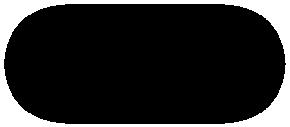
3 minute read
Lesson 2: I Am Me
Materials
My Best Me textbook, writing and coloring utensils, audiovisual equipment
Advertisement
Resources
Student Worksheet: 4yu.info/?i=V5981310 Family Engagement: 4yu.info/?i=V5981360 Video: 4yu.info/?i=V59813101 “The Clean Up Song”
Motivation

Personal hygiene is important to develop in childhood to promote lifelong health. Teaching children why keeping clean helps their lives will motivate them to practice the healthy habits they learn. Children, especially boys, tend to think they have no time to clean themselves, because there is so much to do and they do not want to miss out on all that is happening. However, personal hygiene habits enable children to stay free from illnesses and diseases, feel more confident and comfortable, and maintain and enjoy a healthy body image. Talking about germs is a very vague and far reached subject for children this age. Focus more on how they feel when they are bathed, how clean hands avoids “yukkie” stuff getting everywhere, how fresh their mouths feel after they brush their teeth, how wonderful their hair smells after they wash it, etc. The physical experience of cleanliness is tangible and noticeable to young children. You could go over what their 5 senses observe when they have cleaned themselves and when they observe others who have cleaned themselves. Continue to reinforce the concepts in this lesson throughout the school year by reminding them to wash their hands, keep their clothes clean, and avoid unsanitary actions. Students will learn how keeping clean helps their bodies and is an overall wonderful experience.

Observe: This activity establishes the lesson concept with common hygiene activities that students are likely already aware of. After everyone is on the same page about what actions can be taken to be clean, they are ready to learn why they should take those actions. Read the lines, and direct students to draw lines connecting the activities with their tools. Act: The students will hear about common place activities that lead to messes and draw them on the character at the bottom of the page. The purpose

Goal
Pathways

is to show that messes are common, but they can be followed with actions that clean them up. Read each line to the students and give them time to color as instructed. Ask students if they have made similar messes before. Ask them how they cleaned up those messes. Comment: Read one line at a time (with rhythmic clapping, instrumental music, and/or hand motions), and have the students repeat it. Give students an opportunity to answer the question “How can Adam clean up right?” before proceeding to the next paragraph. Ask students how often they do actions like this. Ask them how they feel afterwards. Highlight the benefits of good hygiene for everyone. Play: The students will have the opportunity to act out important hygiene actions. Call up a student and whisper an action in his or her ear (e.g. brush your teeth, take a shower, clip your toenails, comb your hair, wash your face). Tell him or her to act out the action. Direct the rest of the class to imitate the action and then guess it. Congratulate the student who guesses it correctly. Continue this way until each student has an opportunity to act or guess what their classmates presented. Listen - Sing: Ask the students

if they know the “Clean-Up Song”. Sing it together or have it played for them to hear (4yu.info/?i=V59813101). Explain that they will sing new words to the same tune, words that remind them to clean themselves. Sing it for them to hear. Accompany the song with clapping or hand motions as desired. Sing the song line by line, and have students echo each line. Finally, sing the whole song together. Reflect: Tell the students that they can think about how well they keep themselves clean each day. If they are not doing well, they can make changes and improve in the future. If they are doing well, they can keep up the good work! Guide them to circle faces that represent their performance.
Willpower
Ask students to describe what clean is to them. Repeat the Willpower statement as a class. Decide on hand motions that accompany it. Repeat it with the motions as a class.

